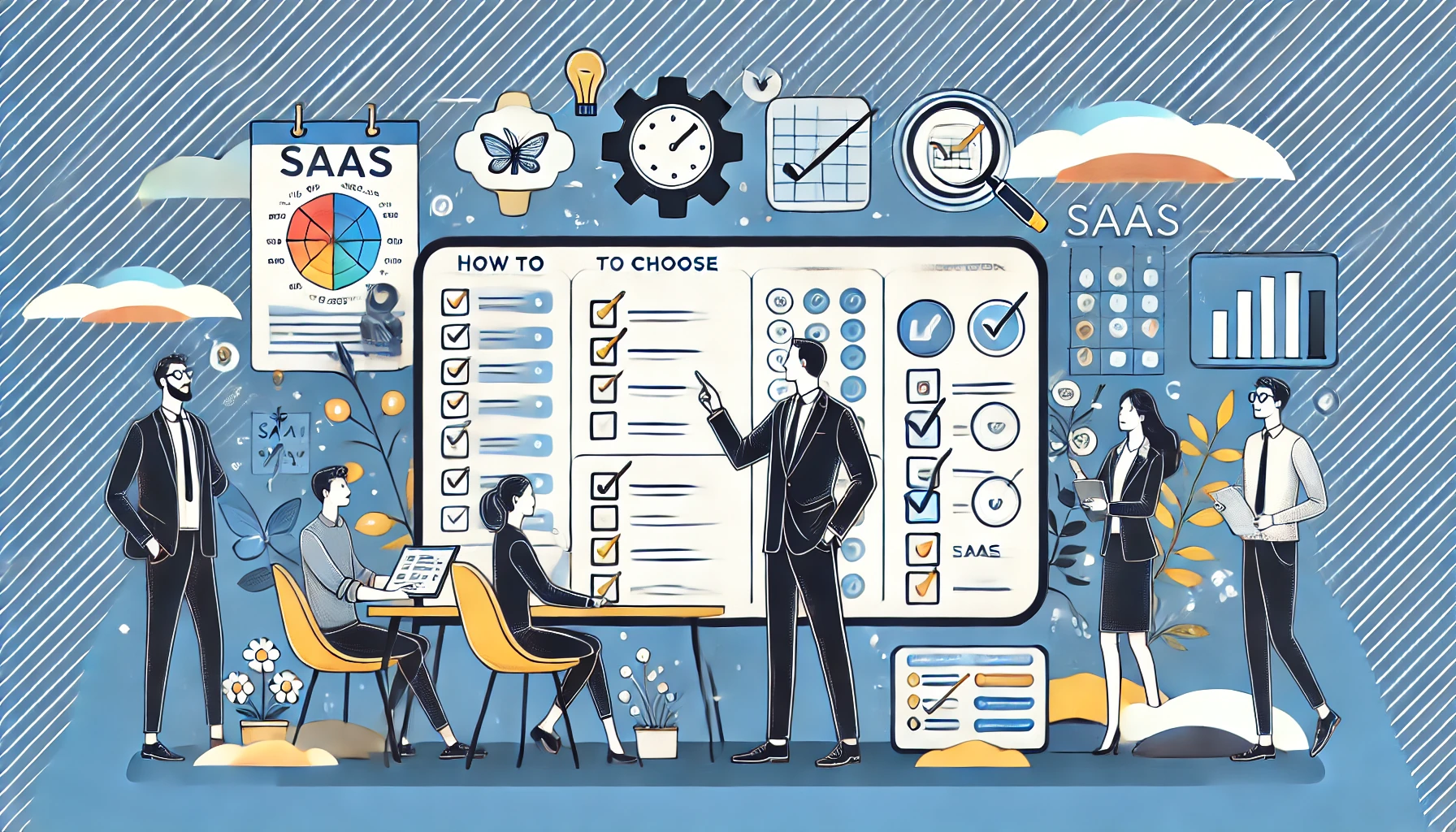
Selecting the right SaaS solution can indeed be daunting, especially with the critical impact it has on your operations and growth. Missteps in this process can lead to wasted resources, disrupted workflows, and lost opportunities.
Choosing the right SaaS solution is essential for ensuring efficiency, scalability, and long-term success. By carefully evaluating your options and considering crucial factors, you can make an informed decision that aligns with your business goals.
In this post, you’ll learn about the key factors to consider, how to evaluate SaaS providers, the role of customer support, integration capabilities, and the importance of scalability for future growth.
What Factors Should You Consider When Choosing a SaaS Solution?
Choosing the right SaaS solution involves several critical considerations. It’s not just about picking a popular or highly-rated product but finding one that meets your specific needs.
- Business Requirements: Understand the specific needs and workflows of your business. List the features you require and prioritize them.
- Budget: Consider both the initial cost and the long-term financial commitment. Ensure the solution provides good value for money.
- Usability: The software should be user-friendly and require minimal training for your team to use effectively.
- Security: Ensure the SaaS provider follows stringent security protocols to protect your data.
- Vendor Reputation: Research the vendor’s market presence and customer reviews to gauge reliability and service quality.
For example, a small e-commerce business might prioritize integration with payment gateways and inventory management features, while a SaaS marketing agency might focus on collaboration tools and customer relationship management (CRM) capabilities.
How Do You Evaluate the Reliability of a SaaS Provider?
Evaluating the reliability of a SaaS provider is crucial to ensure consistent performance and support.
- Track Record: Look into the provider’s history and reputation in the industry.
- Service Level Agreement (SLA): Examine the SLA for guarantees on uptime, support response times, and other critical metrics.
- Customer Reviews: Seek feedback from current and past customers to understand their experiences with the provider.
- Trial Period: Use any offered trial periods to test the software’s reliability and performance under your specific use case.
- Support and Maintenance: Ensure the provider offers robust customer support and regular software updates.
For instance, a company seeking a reliable SaaS provider for project management might choose a well-established vendor like Asana, which has a proven track record and positive customer feedback, coupled with a comprehensive SLA.
What Role Does Customer Support Play in Selecting a SaaS Solution?
Customer support is a critical factor when selecting a SaaS solution, as it directly impacts your ability to resolve issues quickly and efficiently.
Effective customer support can make a significant difference in the user experience and the overall success of the software implementation. Consider the following aspects:
- Availability: Ensure that customer support is available during your business hours, or ideally, 24/7.
- Support Channels: Look for multiple support channels, including phone, email, live chat, and forums.
- Response Time: Assess the average response time and resolution time for support queries.
- Knowledge Base: A comprehensive knowledge base or FAQ section can provide quick answers and reduce reliance on support staff.
For example, a marketing firm using a complex analytics platform would benefit greatly from round-the-clock support to address any technical issues that arise during critical campaigns.
How Important Are Integration Capabilities with Existing Systems?
Integration capabilities are paramount when choosing the right SaaS solution, as they ensure seamless workflows and data consistency across your business operations.
- Compatibility: Verify that the SaaS solution integrates smoothly with your existing software and tools.
- APIs and Webhooks: Check if the provider offers APIs and webhooks for custom integrations.
- Data Migration: Ensure the ease of data migration from your current systems to the new SaaS solution.
- Third-Party Integrations: Evaluate the availability of pre-built integrations with popular third-party applications you already use.
For instance, a company using Salesforce for CRM and QuickBooks for accounting would need a SaaS solution that can easily integrate with both to maintain synchronized data across platforms.
What Should You Look for in Terms of Scalability and Future Growth?
Scalability is a crucial aspect to consider, as it determines whether the SaaS solution can grow with your business.
- Flexibility: The software should be flexible enough to accommodate increasing users and data without significant performance degradation.
- Modular Features: Look for solutions that offer modular features or add-ons that you can enable as needed.
- Pricing Plans: Ensure the pricing plans are scalable and align with your growth projections.
- Performance: Assess the performance of the software under heavy usage scenarios.
For example, a startup might choose a scalable SaaS solution like Slack for team communication, which allows adding more users and advanced features as the company grows.
Your Turn…
Choosing the right SaaS solution involves thorough consideration of your business requirements, budget, usability, security, vendor reputation, reliability, customer support, integration capabilities, and scalability. By carefully evaluating these factors, you can select a SaaS solution that not only meets your current needs but also supports your future growth.
Investing the time to choose the right SaaS solution can lead to increased efficiency, better resource management, and a stronger foundation for your business’s success. Whether you are a small business looking to streamline operations or a larger organization aiming for greater scalability, the right SaaS solution can make all the difference.
For more insights into the future of AI in SaaS, subscribe to our newsletter and stay updated with the latest trends and developments.





